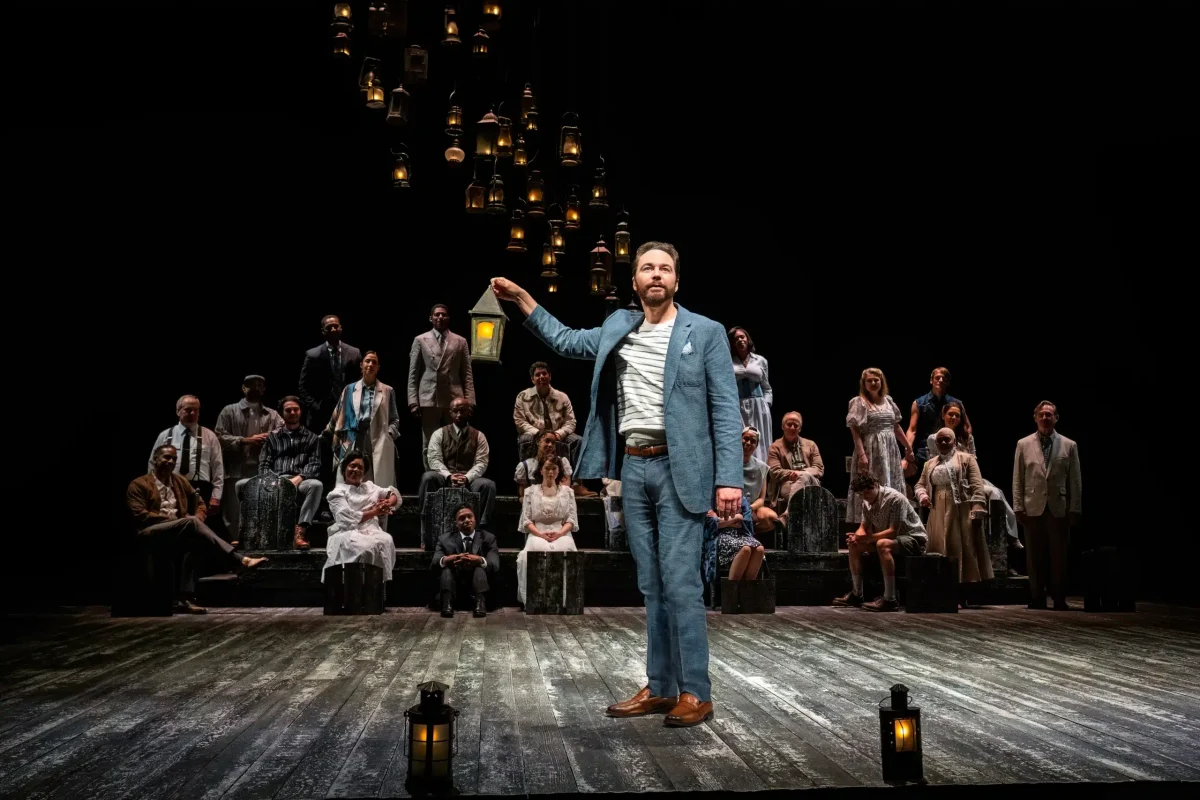As you enter Ethel Barrymore Theater from the chaotic streets of Times Square, you may feel shocked by what welcomes you inside: a quiet, small town. The theater’s stage just features a table and a couple of wooden chairs surrounded by two rows of church pews on either side. However, these pews are not for the cast — they are seats for audience members. “Our Town” is a place where real life takes the stage and where the audience and actors are one.
“Our Town,” although simple in its story and set design, is a must see for anyone needing a little humanity and a whole lot of tears. Set in 1901 in the New Hampshire town of Grover’s Corners, “Our Town” by Thornton Wilder follows the monotonous lives of the town’s inhabitants. The play’s new run on Broadway features the most diverse cast in its history, driving Wilder’s classic story into the 21st century.
The omniscient Stage Manager Jim Parsons begins the play in a truly modern fashion by flippantly facing the audience to demonstrate how to put their phones on do not disturb and away in their pockets. He then introduces the show’s title and creators, noting to the crowd that they are in fact actors putting on a play, breaking the fourth wall. He describes the layout of the town in a cool, calm and collected fashion — a post office here, a grocery store there — and introduces the cast.
“Our Town” has played on Broadway five times previously, but Kenny Leon’s production distinguishes itself by featuring an interracial marriage and a deaf actor, John McGinty, who communicates in American Sign Language with the other townspeople. The production’s inclusivity expands the play’s universal messages of mortality and belonging.
Act 1, “Daily Life,” is aptly named — it focuses on the mundane routines of the Grover’s Corners inhabitants, especially the interactions between the neighboring Webb and Gibbs families. With cast members moving throughout the aisles and speaking straight to the crowd, the audience is effortlessly transported to the small, 20th-century town. The childhood romance that builds between Emily Webb (Zoey Deutch) and George Gibbs (Ephraim Sykes) as they talk to each other through their neighboring windows fills the theater with hope and nostalgia for young love. While the first act is a little slow to start, it sets the foundations of the characters’ relationships, which is necessary for the audience to appreciate the following acts.
Act 2, “Love and Marriage,” revolves around a wedding between the two, where all of the actors skillfully express a communal joy. Ephraim Sykes effortlessly conveys a coyly nervous young groom, and Zoey Deutch an excited, but distressed, bride. The real stars of the show, however, are Mr. Webb (Richard Thomas) with his classic, father-of-the-bride sarcasm, and Julie Halston in her portrayal of Mrs. Soames, an old woman hilariously overwhelmed with the emotions of seeing two young kids of the town finally tie the knot.
In Act 3, “Death and Eternity,” Deutch and Parsons conclude the play with a moving graveyard scene. It focuses on the ghost of Emily after her death, painfully wishing to return to the living. The Stage Manager brutally informs her, through shots of her past life, that there is no way to go back. Parsons’ matter-of-fact approach to consoling Emily makes the scene truly harrowing as the audience is reminded that someday, they too will long to return to their past. It is a story of the transient and cyclical nature of life and how easy it is to take the present for granted and regret how you lived. The intense familiarity underlying the ordinary events of a small town allow viewers, from all walks of life, to resonate with the piece — leaving no dry eyes in the house.
As if the sights and sounds of the play weren’t enough, Leon breaks the fourth wall in a whole other sense: smell. Throughout the play, various smells are emitted throughout the theater to immerse the audience further into the actions taking place. In the first act, it is a fresh floral scent; In the second act, a vanilla cupcake scent wafts through the wedding day events. And in the third, the familiar scent of bacon surrounds the audience as Emily Webb reminisces about mornings long past. This addition enriches the viewer’s ability to imagine the events unfolding without distracting from the play itself.
This new run brings a progressive and immersive perspective for the audience, while staying true to the original intent of the script. In an era of Broadway shows defined by extravagant sets, complex costumes and overzealous theatrics, “Our Town” is a reminder that sometimes the most remarkable part of a play is what it reveals about our everyday lives outside of the theater.
Contact Ashley Combs at [email protected].























































































































































